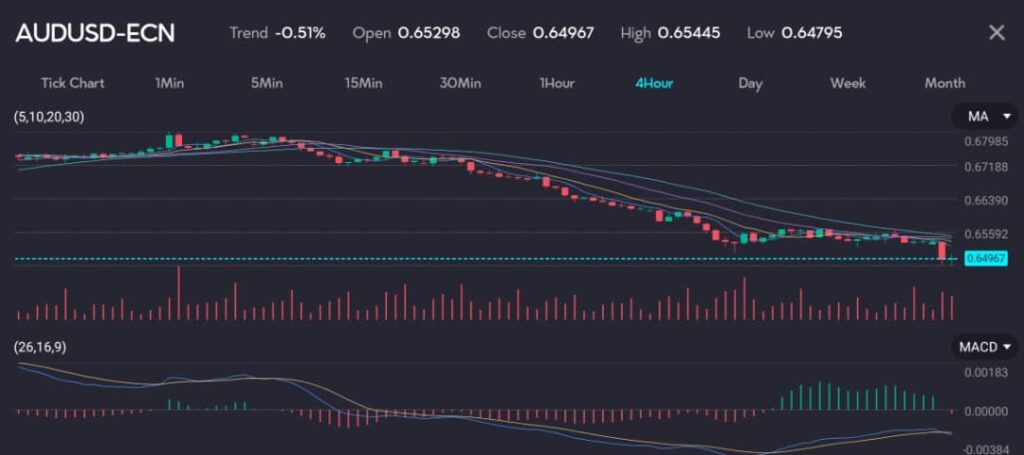Key points:
- Core inflation in Australia slowed to a two-year low, altering rate hike expectations.
- The probability of an RBA rate cut has increased, with potential easing seen by November.
The Australian dollar fell to a three-month low on Wednesday following a softer reading on core inflation. This change in data dampened expectations for further rate hikes and caused a surge in bond futures.

See: Aussie declines, trading at 0.64967 as seen on the VT Markets app.
Core inflation eases to two-year low, influencing market sentiments
The headline consumer price index in Australia rose by 3.8% annually in the second quarter, matching market forecasts. However, the core inflation reading, which is closely monitored by the Reserve Bank of Australia (RBA), slowed to a two-year low of 3.9%.
This decline in core inflation indicates easing price pressures, influencing market sentiments significantly.
You might be interested: Aussie and kiwi dollars struggle on China rate cuts; dollar drifts
Investor expectations shift to possible rate cut after softer inflation data
The softer inflation figures led investors to scale back their expectations of a rate hike at the upcoming RBA policy meeting on August 6. Prior to the data release, there was a 20% implied probability of a quarter-point hike.
However, this probability has now shifted towards a small chance of a rate cut. The market now sees around a 50% probability of easing by November, a significant change from the previous expectation of no move until April.
The data on retail sales showed mixed results, with a drop in quarterly volumes highlighting subdued consumption. This trend further supports the notion that the Australian economy is not experiencing the kind of robust demand that would necessitate further rate hikes.
The Australian dollar fell 0.6% to $0.6498, breaking through last week’s low of $0.65105. The next support levels are seen at $0.6455 and $0.6363.
Bank of Japan’s rate hike adds to volatility
Adding to the volatility was the Bank of Japan’s decision to hike its rates to 0.25%, from a range of zero to 0.10%, with further tightening expected. This decision has already contributed to the Australian dollar sliding over 9% to 99.52 yen in the past three weeks.
In the U.S., the Federal Reserve is also set to meet, with investors heavily betting on the possibility of policy easing as early as September. This global context adds further complexity to the Australian dollar’s outlook.
In summary, the Australian dollar’s recent movements reflect a broader shift in market expectations driven by softer inflation data and changing rate hike probabilities.
Start trading now — click here to create your live VT Markets account.









